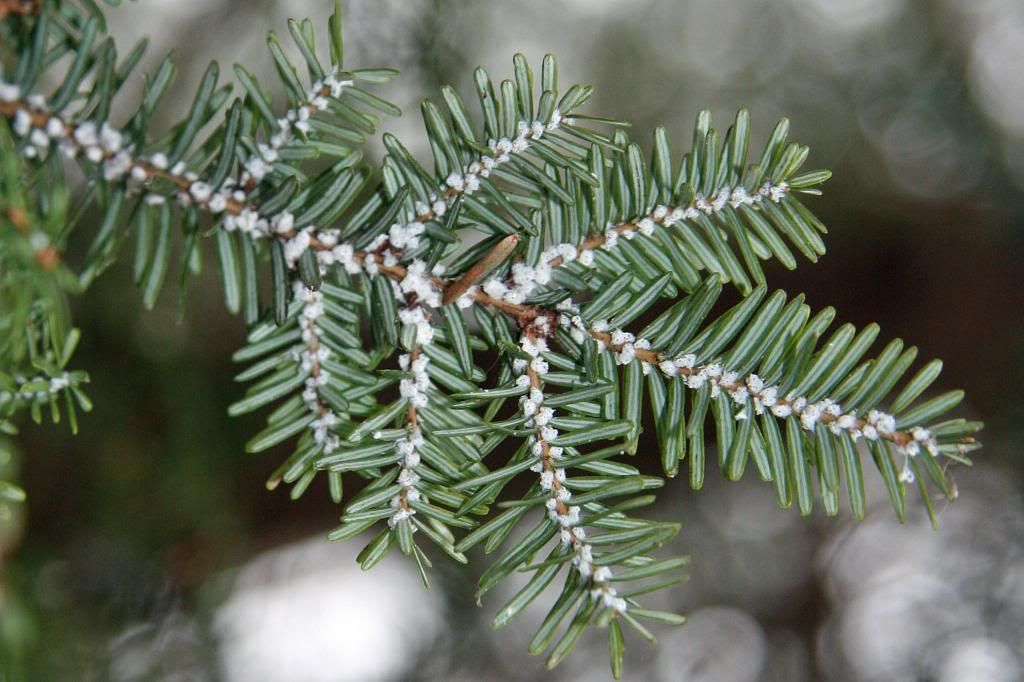By: James Leitner
I hear my alarm go off, 3:45am uhhhh. Time to get up and check the traps to see if we caught any rodents. My research project is seeing how the declines of the hemlock trees are affecting the amount of small rodent species like mice, shrews, voles, and flying squirrels. And yes, they are all adorable.
Hemlock trees can grow more than one hundred feet tall and can live for hundreds of years. They provide homes for a lot of animals and insects, and are also a good food source for some animals that eat the leaves. Since they are so tall, they provide a lot of shade and make the area around them very cool.
Hemlock trees can grow more than one hundred feet tall and can live for hundreds of years. They provide homes for a lot of animals and insects, and are also a good food source for some animals that eat the leaves. Since they are so tall, they provide a lot of shade and make the area around them very cool.
A huge hemlock tree.

Here is a picture of a few big, old hemlock trees. As you can see, even though it is bright and sunny, the area is covered in shade, creating a very cool climate underneath these trees. Hemlock trees stretch all the way down the northeast coast of the United States, down the Appalachian mountains and up through Canada to Ontario.
Since the 1980s, two main problems have been destroying these beautiful trees. First, the trees are being cut down to be used for timber. This timber can be used to make picture frames, help with roof support, or it can also be used to make boxes and crates. They are being logged at a very fast rate. The other way the hemlock trees are decreasing is because of an insect called the Hemlock Woolly Adelgid.
Since the 1980s, two main problems have been destroying these beautiful trees. First, the trees are being cut down to be used for timber. This timber can be used to make picture frames, help with roof support, or it can also be used to make boxes and crates. They are being logged at a very fast rate. The other way the hemlock trees are decreasing is because of an insect called the Hemlock Woolly Adelgid.
Hemlock Woolly Adelgid

Those little white dots are produced by the Woolly Adelgid. The Adelgids show up on Hemlocks regardless of age and can kill the tree within 5-15 years. When these little white dots show on these trees, it is only a matter of time until the Hemlock cannot support its tall body, and falls.
My experiment is seeing how the loss of hemlock trees caused by the Woolly Adelgid and by logging is affecting small rodent populations. We work in 4 different square areas that resemble different types of Hemlock conditions: logging (logging), destroyed trees from the Adelgid (girdled), long term effects of hemlock loss (hardwood), and an area of hemlock unharmed (hemlock control). Most rodents are nocturnal and come out to find food at night, so we had to set traps at night to see what different types of rodents we could find. Don’t worry, the traps do not hurt the animals. All we do is record what type of rodent it is, how much it weighs, its maturity, if we already previously caught it, and we also take saliva samples. What we have noticed is that there is a big increase in rodent species in the girdled plots and in the hardwood plots as well. This is interesting because biodiversity increases when there are fewer hemlock trees. So it poses the question, do people care about biodiversity or old trees?
My experiment is seeing how the loss of hemlock trees caused by the Woolly Adelgid and by logging is affecting small rodent populations. We work in 4 different square areas that resemble different types of Hemlock conditions: logging (logging), destroyed trees from the Adelgid (girdled), long term effects of hemlock loss (hardwood), and an area of hemlock unharmed (hemlock control). Most rodents are nocturnal and come out to find food at night, so we had to set traps at night to see what different types of rodents we could find. Don’t worry, the traps do not hurt the animals. All we do is record what type of rodent it is, how much it weighs, its maturity, if we already previously caught it, and we also take saliva samples. What we have noticed is that there is a big increase in rodent species in the girdled plots and in the hardwood plots as well. This is interesting because biodiversity increases when there are fewer hemlock trees. So it poses the question, do people care about biodiversity or old trees?

No comments:
Post a Comment